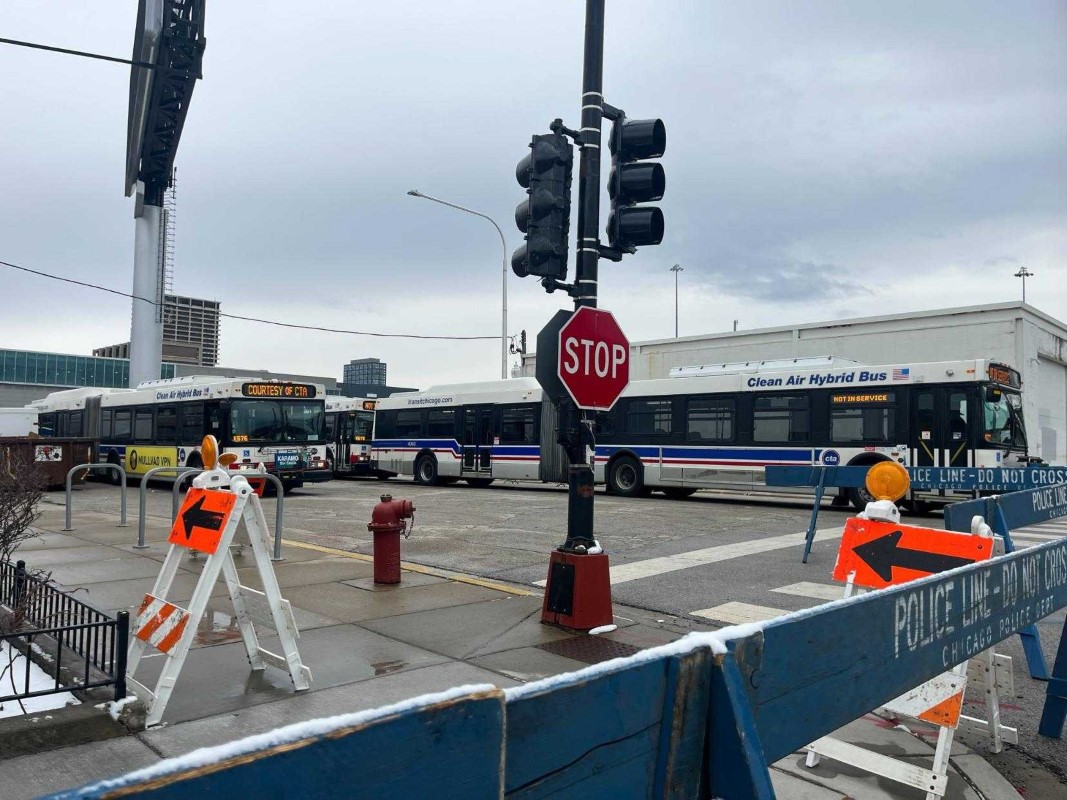The City Council is set to vote Wednesday, April 17 on an ordinance introduced by the Immigration and Refugee Rights Committee that would increase transparency and tracking of migrants exiting city shelters. This comes as the Johnson administration seeks a $70 million increase in funding to address the crisis of actively relocating hundreds of asylum seekers from five shelters at Park District facilities, including two on the Southwest Side (Gage Park and Piotrowski Park), to allow the resumption of normal operations, summer programs and community events.
Park District facilities were among the first buildings to be used by the city as temporary migrant shelters, with the Leone Beach Field House being converted into a shelter in October 2022. Later, North Park Village, Gage Park, Broadway Armory Park, Brands Park and Piotrowski Park became shelter sites. The North Park Village shelter closed in February. The other five are set to be closed by this summer.
“I am proud of the efforts of my administration, our partners, and the many Chicagoans who stepped up to welcome new arrivals by providing shelter in our Park District field houses at a time when this was clearly needed,” said Mayor Brandon Johnson in a March 25 statement. “We are grateful to the alderpersons and communities who have embraced new neighbors with open arms, and we are pleased that these park facilities will be transitioned back to their intended purpose in time for summer programming.”
The five sites set to be closed for the summer held 1,181 people at the beginning of January. During this same period, the total shelter population of the city peaked at 14,824 on January 12, according to the New Arrivals Data Dashboard, provided by 40th Ward alderman and Committee on Immigration and Refugee Rights chair Andre Vasquez.
As of April 5, the five sites hold 356 people, a nearly 70 percent drop in population over the last three months. The Johnson administration’s March 25 press release stated that the people in Park District sites will be relocated to other city-run shelters, and that it would prioritize relocating people to shelters close by.
To date, more than 38,000 migrants have arrived in the city since Texas Gov. Greg Abbott began busing people here in August 2022. Almost immediately, community reception of asylum seekers was controversial, including outcry from residents and community leaders against shelters being established in their neighborhoods.
As pressure mounted, the Johnson administration announced various measures to limit or “decompress” migrant shelters in communities by enacting a sixty-day eviction policy and reducing the number of shelters. WTTW reported that, once the five Park District shelters are closed, the city will have doubled the number of shelters closed since the beginning of February, as the Johnson administration has not opened any new shelters since December amid budget concerns and decreasing shelter populations.
As the news of shelter closing and pending evictions develop, city leaders are calling upon the Johnson administration for transparency and tracking efforts for people exiting shelters. On March 27, the City Council Committee on Immigrant and Refugee Rights unanimously voted to advance an ordinance that would require weekly anonymized reporting of information including age, gender, country of origin, complaints and feedback about shelter conditions, and date exiting the shelter.
“I think it makes sense to decompress [shelters] and get the parks back, but it also necessitates opening up more shelters to take on the capacity,” Vasquez told the Weekly. “I think you can do both. You can expand the shelter system, so that you can decompress the parks, knowing that we’re going to have more buses coming between now and the Democratic Convention.
“I think people need to understand that the buses are going to keep coming. There’s going to be more and more people being bused in and so I believe we shouldn’t be doing evictions from shelters at all,” Vasquez continued. “We need to have a shelter system that works for all who need it. To evict people from shelters isn’t within our values and, more importantly, is going to lead to a larger homelessness issue that’s going to end up costing people even more.”
Ald. Michael Rodriguez (22nd), a member of the Committee on Immigration and Refugee Rights, helped move the ordinance forward within the committee and spoke to the Weekly about his view of the Piotrowski Park shelter closing. Another shelter opened in his ward in January, at the site of the former CVS in Little Village, 2634 S. Pulaski Rd..
“When it was imminent that we were having a new facility in Little Village open in the 22nd Ward, the Pulaski site, I wrote a letter to the mayor’s office saying that it’s time to return Piotrowski Park back to full community use,” Rodriguez said. “It’s a gem of our community. I grew up in Piotrowski Park, playing baseball and basketball there. I coached gymnastics and all sorts of sports there when I was in college. It’s an extremely vital resource for the community and we need to return it to its great use of keeping kids active and safe.”
Rodriguez said that all 140 residents of the Piotrowski Park shelter were moved out of the park by the weekend of March 29. “We’re very proud to continue to support our migrant brothers and sisters and also get this important community resource back to servicing both longtime residents and our newest arrivals.”
Michael Liptrot is a staff writer for South Side Weekly and Hyde Park Herald.


